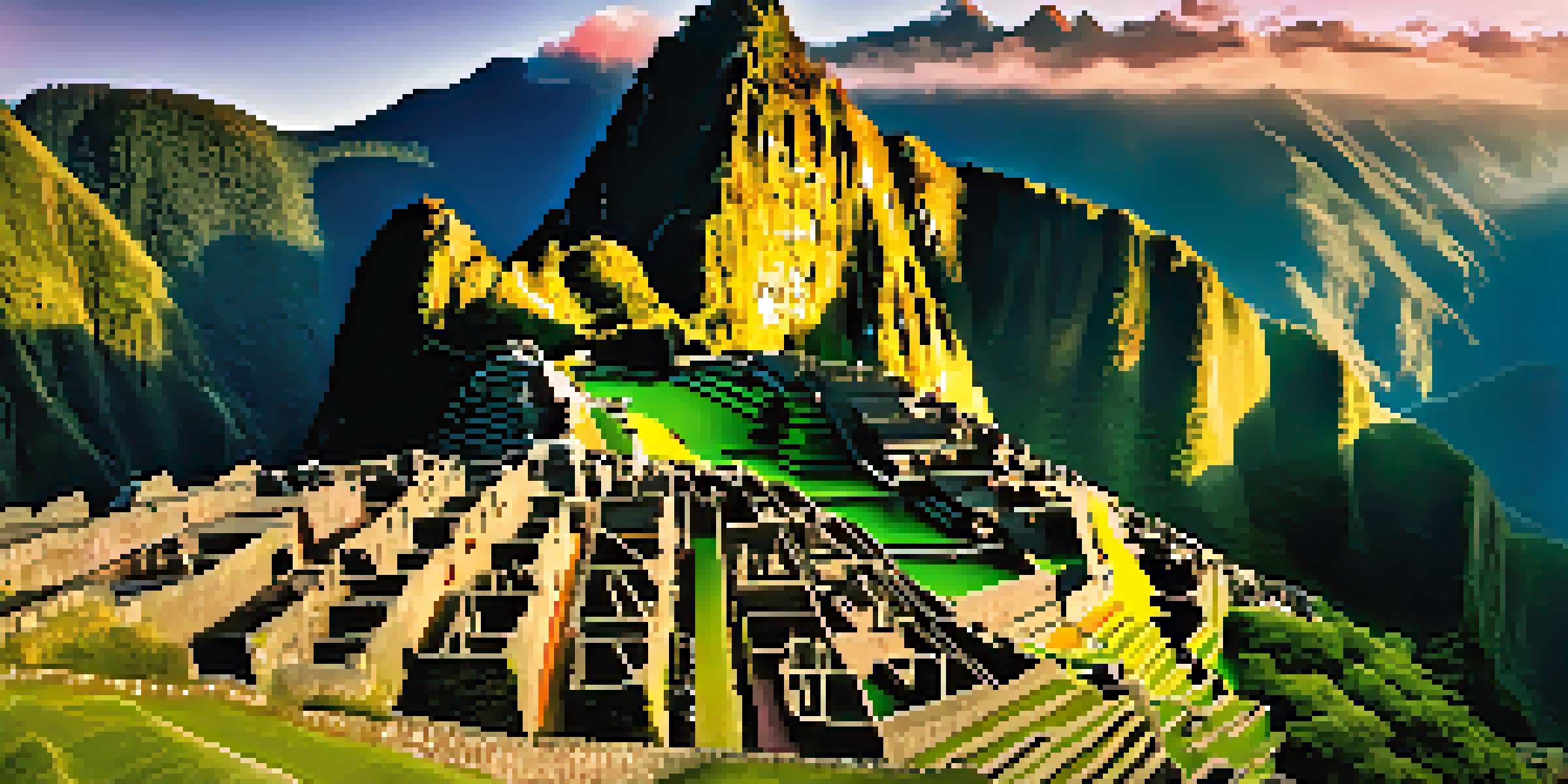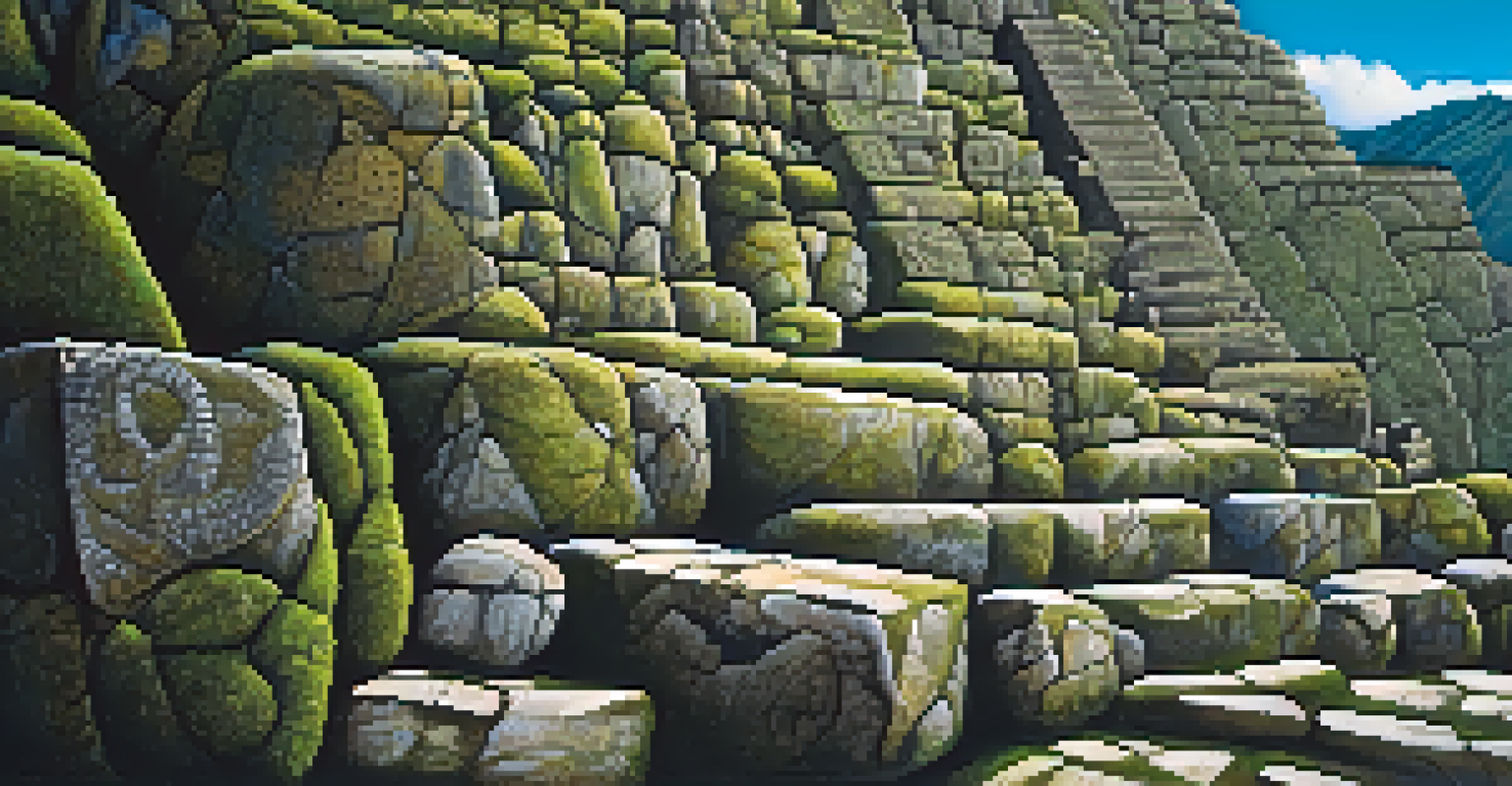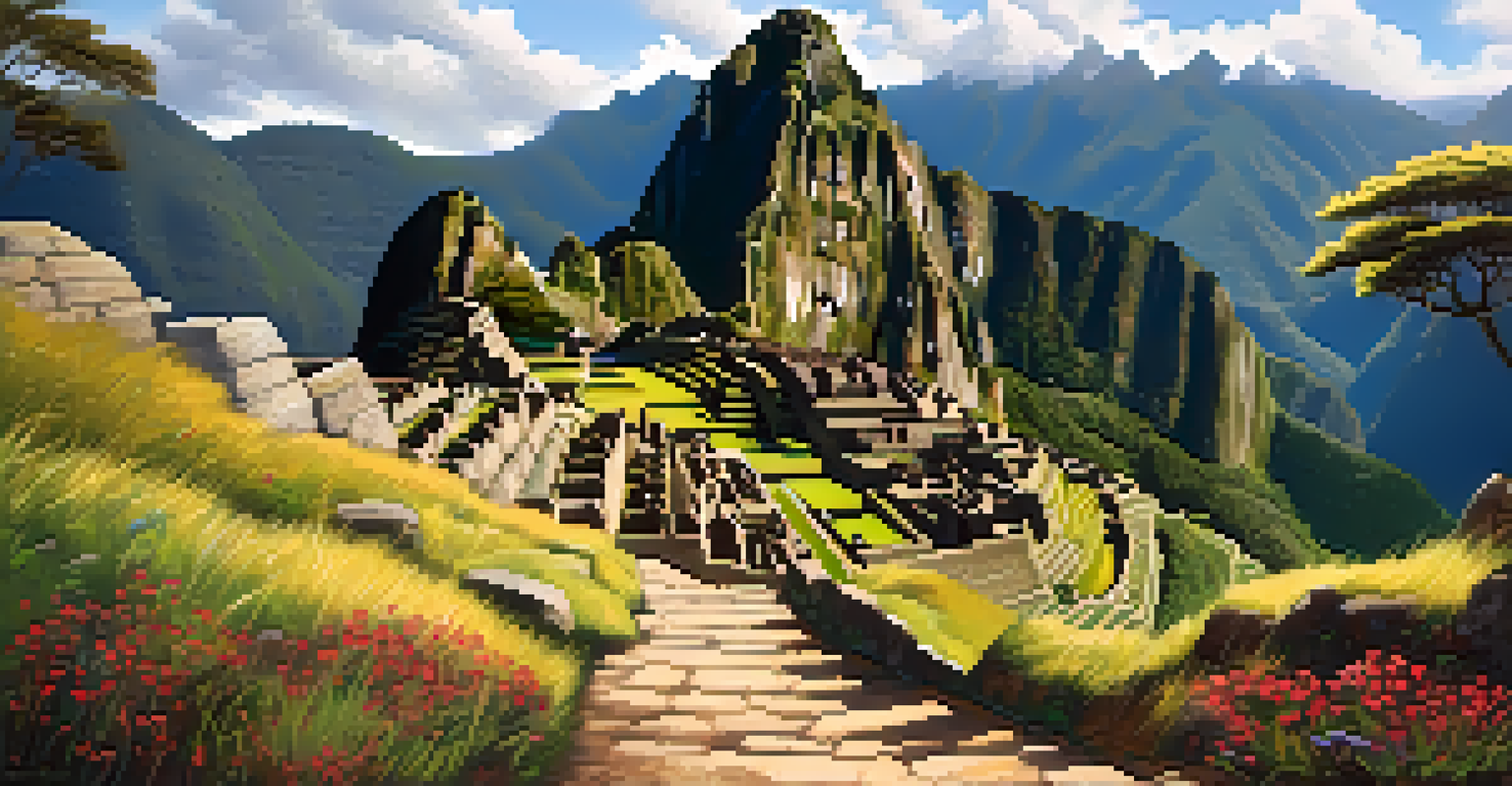Machu Picchu: Myths and Legends of the Sacred City

The Origins of Machu Picchu: A Historical Enigma
Machu Picchu, often referred to as the 'Lost City of the Incas,' is shrouded in mystery. Built in the 15th century, its precise purpose remains a subject of debate among historians. Some believe it served as a royal estate, while others argue it was a religious retreat. This ambiguity adds to its allure, inviting countless visitors to ponder its significance as they traverse its ancient pathways.
Machu Picchu is a masterpiece of architecture and a monument to the Inca civilization, showcasing their ingenuity and respect for nature.
The city was rediscovered in 1911 by American historian Hiram Bingham, sparking global interest. Bingham's findings, although significant, were merely the tip of the iceberg regarding Machu Picchu's rich history. The site showcases remarkable architectural ingenuity, with terraced farming and expertly constructed stone walls that have withstood centuries of weathering. Each stone tells a story, hinting at the advanced skills of the Incas.
Today, Machu Picchu remains a UNESCO World Heritage Site, attracting millions of tourists each year. Its combination of breathtaking scenery and historical intrigue creates a compelling narrative that continues to captivate the imagination. As visitors explore its ruins, they become part of an ongoing story that intertwines history, mystery, and legend.
Inca Legends: The Sacred Connection to the Gods
According to Inca mythology, Machu Picchu was a sacred site, believed to be favored by the gods. The Incas revered the mountains surrounding the city, seeing them as divine entities that protected their way of life. This spiritual connection is deeply embedded in the architecture and layout of the city, reflecting their reverence for nature and the cosmos.

One popular legend tells of a goddess named Pachamama, the Earth Mother, who bestowed fertility and abundance upon the land. The Incas constructed temples and altars at Machu Picchu to honor Pachamama, seeking her blessings for a bountiful harvest. These rituals emphasized the importance of harmony between humanity and the earth, which remains a core value in Andean culture today.
Machu Picchu: A Historical Mystery
The purpose and significance of Machu Picchu remain debated, adding to its allure as a UNESCO World Heritage Site.
The stories of these deities not only highlight the spiritual significance of Machu Picchu but also serve as a reminder of the Incas' enduring connection to their environment. As visitors wander through the site, they can almost feel the echoes of ancient prayers mingling with the wind, creating a sense of reverence for the past.
The Legend of the Inca Princess and Machu Picchu
One captivating legend tells of an Inca princess named Ñusta, who was said to reside in Machu Picchu. According to the tale, she fell deeply in love with a commoner, which was forbidden in Inca society. To protect their love, they fled to the hidden city, where they could live freely away from societal constraints. This story embodies themes of love and rebellion, resonating with many who visit the site.
The Incas believed that the mountains were sacred. They revered them as gods that provided sustenance and protection.
As the story goes, Ñusta would often gaze out over the sacred valley, longing for the freedom to love openly. The lush landscape surrounding Machu Picchu became a symbol of their love, a sanctuary away from the rigid expectations of the Inca Empire. This vibrant connection to nature further enriches the narrative of the city, as it reflects the beauty and complexity of human emotions.
While the existence of Ñusta remains a myth, her story captures the imagination of visitors who seek romance and adventure in the heart of the Andes. Each traveler who walks the trails of Machu Picchu becomes a part of this enduring tale, where love transcends time and societal boundaries.
The Mystery of the Inca Gold: Treasures Hidden in the Mountains
Machu Picchu is often linked to legends of lost treasures, particularly gold. The Incas were known for their incredible wealth in gold and silver, which they used to adorn temples and worship their gods. When the Spanish conquistadors arrived, many believe that the Incas hid their treasures in the mountains surrounding Machu Picchu to protect them from plundering. This idea of hidden gold continues to intrigue treasure hunters and adventurers.
One particular tale tells of a secret passage leading to vast underground chambers filled with gold artifacts. This passage, according to legend, remains undiscovered, waiting for the right explorer to unveil its secrets. Such stories not only add an air of adventure to the site but also highlight the Incas' resourcefulness and ingenuity in protecting their legacy.
Inca Beliefs and Nature's Reverence
Inca mythology connects Machu Picchu to sacred deities and emphasizes harmony between humanity and the earth.
While no treasure has been found, the allure of Machu Picchu as a treasure trove continues to spark curiosity. It serves as a reminder that sometimes the greatest riches are not material but rather the stories and connections we forge when we explore such sacred places.
The Astronomical Significance of Machu Picchu
Machu Picchu is not just an architectural marvel; it is also an astronomical observatory. The Incas had a profound understanding of astronomy, and they constructed the city in alignment with celestial events. Certain structures, such as the Intihuatana stone, were designed to track the sun's movements, playing a crucial role in their agricultural calendar and spiritual practices.
During the winter solstice, for example, the sun casts a unique shadow on the Intihuatana, marking the changing seasons. This connection to the cosmos reflects the Incas' deep respect for nature and their belief in the harmony between the earth and the universe. It underscores the idea that Machu Picchu was not merely a city but a sacred space where the heavens and earth converged.
As modern visitors stand atop the ruins, they can appreciate the Incas' remarkable insights into astronomy. It invites us to reflect on our place in the universe and the timeless quest for knowledge that transcends cultures and eras. The stars above Machu Picchu continue to inspire wonder and awe, reminding us that we are part of a much larger cosmic story.
The Legend of the Lost City and Its Rediscovery
The story of Machu Picchu's rediscovery is as captivating as the site itself. Forgotten for centuries, it remained hidden under dense vegetation until Hiram Bingham stumbled upon it in 1911. His expedition was not just a search for treasures but a quest to uncover the mysteries of the Inca civilization. The moment he laid eyes on the ruins, he knew he had found something extraordinary.
Bingham's findings ignited global fascination and led to numerous expeditions that uncovered more of the site's secrets. However, the legend of Machu Picchu being a 'lost city' only grew, with many believing it to be a mystical place untouched by time. This narrative fueled tourism, making it one of the most visited archaeological sites in the world.
Preservation of Cultural Heritage
Efforts to preserve Machu Picchu are crucial to maintaining its integrity and cultural significance for future generations.
Today, Machu Picchu stands as a symbol of cultural heritage, attracting individuals eager to connect with its rich history. The story of its rediscovery reminds us that even the most hidden treasures can emerge from the shadows, inviting us to explore and learn from the past.
Cultural Significance and Preservation of Machu Picchu
Machu Picchu is more than just a tourist destination; it represents a vital piece of cultural heritage for the Peruvian people. The site embodies the ingenuity of the Inca civilization, showcasing their architectural prowess and their connection to the natural world. As such, it holds significant cultural importance that goes beyond its historical value.
Efforts to preserve Machu Picchu are ongoing, as the influx of visitors can impact its fragile ecosystem. Local authorities have implemented measures to protect the site while ensuring that it remains accessible to future generations. This delicate balance between preservation and tourism is crucial to maintaining the integrity of this sacred city.

As visitors explore Machu Picchu, they are encouraged to appreciate not only its beauty but also its significance. Engaging with the history and culture of the site fosters a deeper understanding and respect for the Inca legacy. By protecting Machu Picchu, we honor the past and ensure that its stories continue to resonate with those who seek to discover its wonders.